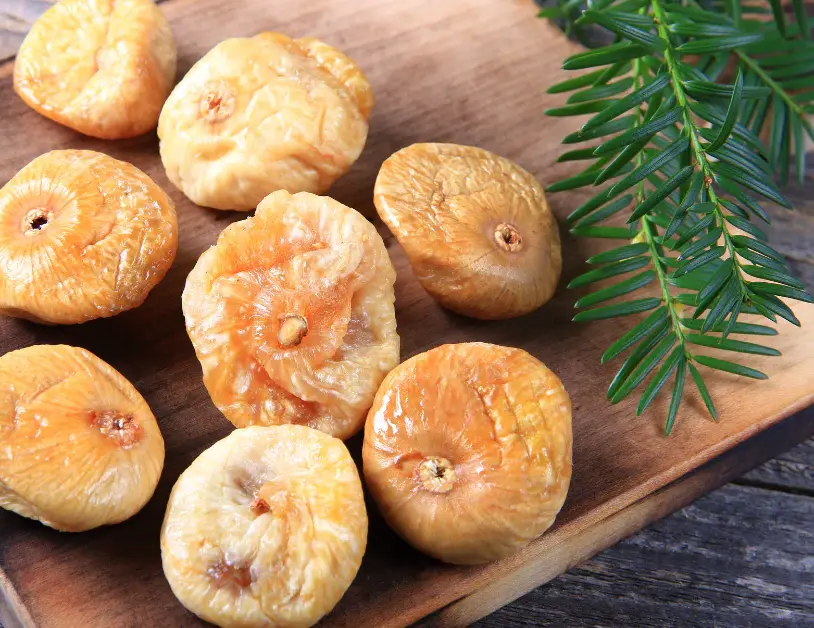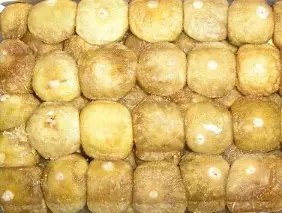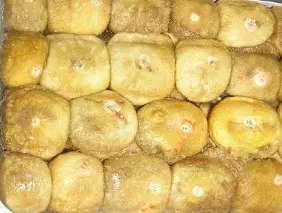Iranian Fig
History
The fig, scientifically named Ficus carica ,is a species of flowering plant from the Moraceae family. Archaeologists believes that fig is the first crop of human in more than 11400 years ago and it was the first grown fruit by human and cultivated 1000 years in Middle East before wheat, barley and legumes.
As mentioned above, Figs are one of the oldest fruits grown by humans and put in the daily food basket. They are rich in calcium, iron, fiber and minerals. The fig tree grows in dry and sunny places and is native to Asia Minor and the Mediterranean region. They can be eaten fresh or dried.
What is a fig?
Fig fruit is very popular because of its honey flavor and delicate texture. It may be interesting to know that figs are not considered fruit in botany. They are actually flowers and some species of it depend on fig bees for pollination. In contrast, there are species of this plant that are self-pollinating. There are over 750 different species of figs. Fig fruit is the size of a thumb and is full of small seeds. It has an edible green or purple skin. It has a pink flesh with a sweet and unique taste. Figs usually become ripe and ready to eat in late spring and early fall. The crop harvested in the fall is more productive, with a thicker skin and sweeter taste than the first-turn crop. Figs are a valuable source of calcium and play a role in bone strength. They also contain potassium and prevent high blood pressure by balancing the amount of sodium in the body. The high fiber in figs helps beneficial intestinal bacteria and plays an important role in gastrointestinal health and can give a person satiety feeling for a longer period of time.
They have long been used as a laxative due to their high fiber content. The taste of figs is as pleasant as their smell. However, they taste differently depending on the type. Yet, all types of them have a sweet and moist taste. Fig meat is jelly but not juicy and you can feel the crispness of small grains under your teeth when you eat it. Fresh figs taste almost like honey or berries. However, their sweetness varies from honey-like to relatively mild depending on their type. Some types of them have a caramel flavor. Fresh figs rot quickly and take on a sour taste and smell. They are often dried to be prevented from rotting and to increase their shelf life. Notably, fresh figs have low calories, while Iranian dried fig are rich in sugar and calories.

Dried figs
Dried figs are one of the first dried fruits produced by humans
Although fresh figs are not available all year long, but you can always benefit from the properties of dried figs. How much dry fig do you eat in your daily diet? You should include dried figs in your diet as it has many therapeutic benefits. In below, 10 reasons why you should add this product to your diet are mentioned.
Dried Fig properties for human health
1-Improve digestion
Dried figs are high in dietary fiber. It helps prevent constipation and other digestive problems; figs are known as a natural laxative.
2-Weight Loss
As one of the important properties of dried figs should be noted that this type of fig has few calories. So, if you want to lose weight a few pounds, use this product as an ideal snack.
3-blood pressure
The body’s sodium level increases with salt intake. In this way, the body’s sodium and potassium balance is disturbed, so blood pressure increases. Dried figs are excellent for restoring this balance and preventing hypertension. One dried fig contains 129 mg potassium and 2 mg sodium.
4-Antioxidants
One of the properties of dried figs is that it is an antioxidant-rich sweet and tasty fruit; the amount of antioxidant in this product is even greater than natural figs.
According to one study, dried figs have higher quality phenol antioxidants than other fruits that attribute their antioxidant properties to vitamin C and vitamin E.
5-Heart disease
The antioxidant-rich content in dried figs kills the free radicals that can damage blood vessels and cause heart disease. Also, the results of some studies show that dried figs reduce triglyceride levels and have a significant effect on heart disease.
6-Cancer
Dried figs are high in antioxidants, so they can help prevent DNA damage caused by free radicals. Free radicals can damage cellular DNA by producing dangerous cells. This may be one of the lesser-known properties of dried figs, but now that you know it , add it to your diet.
7-Bone strengthening
Dried figs, along with other calcium-rich foods, can improve bone density and bone strength. A dried fig contains 3% calcium.
8-Diabetes
Dried figs are also useful for people with diabetes. However, dried figs contain high sugar, so diabetics should consult with a specialist about consumption.
9-Anemia (Iron deficiency)
Eating dried figs helps increase blood hemoglobin levels by increasing iron levels in the body. Iron is an important mineral that circulates hemoglobin throughout the human body. Thus, dried figs could help treat iron deficiency anemia.
10-Fertility health
The ancient Greeks used figs as a sexual reinforcement drug. In ancient Greece figs were considered a sacred fruit related to fertility and love. Figs can increase fertility and libido because they are rich in minerals, zinc, manganese, and magnesium that are necessary for improving human fertility health.
It should be noted that fresh figs have less vitamins and minerals than dried figs.
Nutritional facts in 100 grams of dried figs:
- Calories: 249
- Protein: 3.3 g
- Carbohydrates: 64 g
- Dietary fiber: 10 grams
- Sodium: 10 mg
- Potassium: 680 mg
- Cholesterol: 0 mg
- Total Fat: 0.9 g
- Saturated Fat: 0.1 g
- Monounsaturated fat: 0.3 g
- Multi-saturated fat: 0.2 g
- Sugar: 48 g
Different uses of fig
Figs can be eaten in fresh or can be used to make jam, ice cream. Its fruit is used as dry, fresh, compote, jam, flour and marmalade. Since it is very difficult to store and transport fresh figs, it is mostly used in processed form; Also, fig vinegar has a sweet and pleasant taste that is used for all kinds of pickles and salads.
Fig production in Iran
With its diverse climate, Iran is one of the centers of fig cultivation in the world. Figs of Estahban city (in Fars province) are world famous. Every year, a large amount of fresh or dried figs are exported from Iran to the whole world. In addition to Fars, other provinces of Iran such as Kerman, Khorasan and Lorestan produce figs that can meet domestic needs and be exported to other countries.
Classified dried Figs
Classified figs are into two main groups, the open mouth (101) and the closed mouth and each type subdivided into three types as below.
Open mouth Fig
Dried Fig 101A

Dried figs that belong to this grade have yellow and white color. The size of them is about 18 mm. About a half of the total amount has open mouth.
Dried Fig 101AA

This is another type of Iranian dried figs, which also belongs to open mouth type. This type is smaller compared to 101AAA and more reasonable in price. This type is also white and yellow but the size of each fig is around 22mm with 15% of closed mouth.
Dried Fig 101AAA

This is the most exclusive and expensive type among all Iranian dried figs. The main characteristic of this type is the white color or slightly yellow. This type is big in size and majority of figs of this type are open mouth, which makes them easy to eat and chew.
Closed mouth figs
Dried Fig B

This is the most reasonable and lowest quality in Iranian dried figs. The size of figs are around 14 mm and the color of this type is brown and gray.
Dried Fig A

This is the most favorable type for export, due to being competitive in price. This type of dried fig has some differences to other types.
Dried Fig AA

Dried figs of this grade have light yellow and white color and the size of them is about 22 mm. Most percent of dried fig in this grade (about 90 percent) have close mouth.
Pressed fig paste
Another kind of fig is Pressed fig paste and divided in two types as below:
Pressed fig pastes grade B

This product is made by pressing wetted figs by machine. The color of figs is darker than the grade A.
Pressed fig pastes grade A

This product is made by pressing wetted figs by machine. The color of figs
is white.